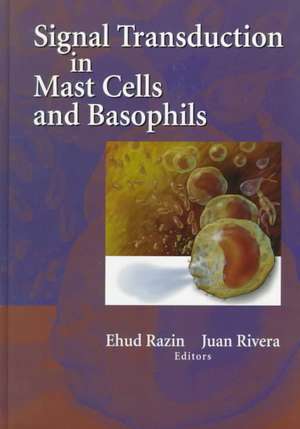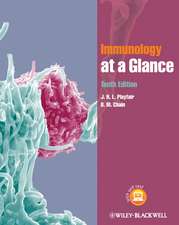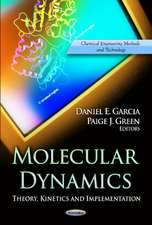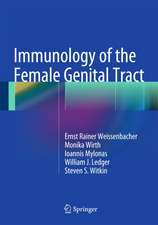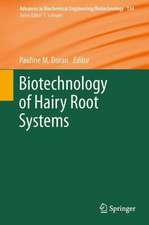Signal Transduction in Mast Cells and Basophils
Editat de Ehud Razin, Juan Riveraen Limba Engleză Hardback – 10 mai 1999
| Toate formatele și edițiile | Preț | Express |
|---|---|---|
| Paperback (1) | 1223.70 lei 6-8 săpt. | |
| Springer – 29 sep 2011 | 1223.70 lei 6-8 săpt. | |
| Hardback (1) | 1070.25 lei 38-44 zile | |
| Springer – 10 mai 1999 | 1070.25 lei 38-44 zile |
Preț: 1070.25 lei
Preț vechi: 1408.23 lei
-24% Nou
Puncte Express: 1605
Preț estimativ în valută:
204.86€ • 222.60$ • 172.19£
204.86€ • 222.60$ • 172.19£
Carte tipărită la comandă
Livrare economică 17-23 aprilie
Preluare comenzi: 021 569.72.76
Specificații
ISBN-13: 9780387986258
ISBN-10: 0387986251
Pagini: 423
Ilustrații: XX, 423 p.
Dimensiuni: 193 x 260 x 25 mm
Greutate: 0.99 kg
Ediția:1999
Editura: Springer
Colecția Springer
Locul publicării:New York, NY, United States
ISBN-10: 0387986251
Pagini: 423
Ilustrații: XX, 423 p.
Dimensiuni: 193 x 260 x 25 mm
Greutate: 0.99 kg
Ediția:1999
Editura: Springer
Colecția Springer
Locul publicării:New York, NY, United States
Public țintă
ResearchDescriere
Mast cells and basophils are responsible for inflammatory and allergic reactions. As such, the signals that generate these responses and how their pathways of action work are the focus of much present day research into allergy and inflammation. This book focuses primarily on the molecular mechanisms that govern mast cell and basophil cell biology and function, as well as providing a comprehensive summary of the field of signal transduction and also giving insights into areas that have therapeutic potential. The book provides detailed insights into mast cell and basophil growth and development, their activation by allergens, including details of receptor activation and downstream events, and the regulators of morphology and degranulation. The metabolic pathways involved in prostaglandin and leukotriene production are discussed as is the role of transcription factors in mast cell growth and cytokine production. Written by leaders in the field, this volume will provide the reader with an up-to-date account of a topic where the rapid progress makes conventional information gathering difficult.
Cuprins
Section I.- 1 Signals in the Regulation of Mast Cell Growth and Development: A Perspective.- Mast Cells: Versatile Effector Cells in Health and Disease.- Mast Cell Development: A Brief Overview.- In Vivo Veritas: In Vitro Versus In Vivo Models of Mast Cell Development.- Mice or Humans? Species Differences in Mast Cell Development and Phenotype.- Conclusions.- 2 The Regulation of Mast Cell and Basophil Development by the Kit Ligand, SCF, and IL-3.- Discovery of SCF, a Ligand for the Receptor Encoded at c-kit.- Effects of SCF in Mast Cell Biology.- Recombinant Human SCF Promotes Human Mast Cell Hyperplasia In Vivo.- SCF/Kit Signaling and the Regulation of the Survival and Size of Mast Cell Populations In Vivo.- SCF Can Regulate Mast Cell Secretory Function.- Interleukin-3.- Assessing the Role of IL-3 in Mouse Mast Cell and Basophil Development Using IL-3 -/- Mice.- KitW/KitW-v, IL-3 -/- Mice Exhibit a Profound Impairment of Mucosal Mast Cell Development and Immunity, During Infection with Strongyloides venezuelensis.- SCF and IL-3 Have Distinct Roles in the Regulation of Physiological Mast Cell and Basophil Development and Immunologically Induced Mast Cell and Basophil Hyperplasia.- Conclusions.- 3 The c-kit Receptor and the mi Transcription Factor: Two Important Molecules for Mast Cell Development.- Kit.- MITF.- Conclusions.- 4 Mouse and Rat Models of Mast Cell Development.- Identification of the Major Granule Constituents of Mouse MC.- Granule Characterization of Varied Populations of MC in Normal Mice.- Helminth-Induced Mastocytosis in the Jejunum.- mBMMC.- Transformed MC Lines.- Future Directions.- 5 Factors That Affect Human Mast Cell and Basophil Growth.- Ontogeny of Mast Cells and Basophils.- General Characteristics of Mast Cells and Basophils.- Mast Cell Phenotypes In Vivo.- Development In Vitro of Human Basophils and Mast Cells.- In Vitro Studies on Mast Cells and Basophils Utilizing Cell Lines.- Development of Human Mast Cells and Basophils In Vivo.- Conclusions.- 6 Signal Transduction by Cytokines.- Mast Cells and Cytokines.- The Four-Helix Bundle Cytokine Family.- Interferons and IL-10.- Tyrosine Phosphorylation Events.- Activation of Ras Proteins.- Tyrosine Phosphorylation of She and Its Function as an Adaptor.- MAP Family Kinases.- Functions of MAP Family Kinases in Mast Cells.- The IL-4 and IL-13 Receptors.- Similarities and Differences in Signal Transduction by Different Cytokines.- Conclusions.- 7 Mast Cell Apoptosis and Its Regulation.- Physical Triggers of Mast Cell Apoptosis.- Cytokines Regulating Mast Cell Apoptosis.- Genetic Control of Mast Cell Apoptosis.- Mast Cell Apoptosis In Vivo: Clinical Correlates.- Conclusions.- Section II.- 8 Early Signals in Mast Cell Activation: A Perspective.- Role of Aggregation: Two Models.- Ligand Affinity and Signaling.- Conclusions.- 9 Fc?RI Signaling in Specialized Membrane Domains.- Background.- Fc?RI Activation in Membrane Domains.- Future Directions.- Conclusions.- 10 Regulation and Function of Protein Tyrosine Kinase Syk in Fc?RI-Mediated Signaling.- Protein Tyrosine Phosphorylation.- Importance of Syk in Cellular Signaling.- Present Model for Early Events in Fc?RI Signaling.- Structure of Syk.- Regulation of the Function of Syk.- Association of Syk with Other Proteins.- Downstream Molecules: Substrates.- Conclusions.- 11 The Role of Protein Phosphatases in Cell Signaling by the High-Affinity Receptor for Immunoglobulin E.- Protein Tyrosine Phosphatases.- Phosphatase-Dependent Inhibitory Receptors.- Protein Serine/Threonine Phosphatases.- General Considerations.- 12 Protein Kinase C and Early Mast Cell Signals.- Molecular Structure of PKC Family Members.- Translocation and Activation of PKC Isozymes.- Regulation of PKC Activity.- PKC, the Mast Cell, and the Basophil.- Activation of PKC in the Mast Cell: Is Activation an Early Event?.- PKC and Receptor Phosphorylation.- Molecular Associations of PKC In Vivo.- Protein Kinase C: A Suitable Target for Therapeutic Intervention?.- Conclusions.- 13 Mast Cell Inhibitory Receptors of the Immunoglobulin Superfamily.- Mast Cell Fc?RIIb 172].- Mouse gp49B1/Human HL9.- Mast Cell p91 and PIR-B1.- Functional Implications of Multiple ITIM-Bearing Inhibitory Receptors in Mast Cells.- Section III.- 14 Signaling Pathways That Regulate Effector Function: Perspectives.- Model of Pathways Activated by Fc?RI Aggregation.- Binding of Negatively Regulating Molecules to Fc?RI and Their Tyrosine Phosphorylation Independent of Syk.- Cell Adhesion, Focal Adhesion Kinases, and Signaling.- Conclusions.- 15 Phosphoinositide-Derived Second Messengers in Fc?RI Signaling: PI-3 Kinase Products Control Membrane Topography and the Translocation and Activation of PLC-?1 in Antigen-Stimulated Mast Cells.- Phosphatidylinositol 3-Kinase.- Phospholipase ?.- PI-3 Kinase Controls the Translocation and Activation of PLC-?1.- Conclusions.- 16 Phospholipase D and Its Role in Mast Cells.- Catalytic Reactions and Assays of PLD: Phospholipid Hydrolysis and Transphosphatidylation.- Biochemical Characteristics and Regulation of PLD.- Cloned PLD Isoforms.- Pharmacological Probes for Study of PLD Function.- Physiological Roles of PLD.- PLD in Mast Cells.- Unanswered Questions and Conclusions.- Addendum.- 17 New Perspectives on Ca2+ Influx in Mast Cells.- Historical Frame of Reference.- Practical Lessons from the Past.- Properties of an Antigen-Evoked Ca2+ Current in RBL-2H3 Cells.- Measurements of Ca2+ Current Versus 45Ca2+ Influx.- Benefits of Noninvasive Measurements at Warm Temperatures.- Future Directions.- Ca2+-Dependent Activation of NF-AT by the Fc?RI.- Conclusions.- 18 The MAP Kinases and Their Role in Mast Cells and Basophils.- The MAP Kinases.- MAP Kinases in Mast Cells.- Conclusions.- 19 Tec Family Protein Tyrosine Kinases and Their Interaction with Protein Kinase ?.- Structure of Tec Family PTKs.- Function of Tec Family PTKs.- PH Domains.- Perspectives.- 20 Activation of Heterotrimeric GTP-Binding Proteins.- The Supergene Family of GTP-Binding Proteins.- Tools to Study G-Protein Functions.- Direct Evidence for the Involvement of GTP-Binding Proteins in Mast Cell Exocytosis.- G Proteins as Mediators of the Peptidergic Pathway of Mast Cell Activation.- G Proteins Are the Cellular Receptors of Basic Secretagogues.- Activation of Mast Cell Exocytosis by the Heterotrimeric G Protein Gi3.- The Involvement of Ctx-Sensitive G Proteins in Mast Cell Signaling.- The Role of G?z in Mediating Fc?RI-Induced Responses.- Future Perspectives.- 21 Activation of Small GTP-Binding Proteins.- Ras.- Rab.- ARF.- Rho.- Conclusions.- Section IV.- 22 Regulation of Mediator Synthesis and Secretion: Overview.- 23 Early-Response Genes in Mast Cell Activation.- PKC and Mast Cell Proliferation.- AP-1 in Activated Mast Cells.- PKC and AP-1 in Activated Mast Cells.- USF-2 in Mast Cells.- Microphthalmia Transcription Factor (mi) in Mast Cells.- 24 Fc?RI-Mediated Activation of NF-AT.- Transcription Factors in Mast Cells.- NF-AT-Like Factors in Mast Cells.- NF-AT Factor(s) and Cofactors in Mast Cells.- NF-AT DNA-Binding Sites in Mast Cells.- NF-AT Activation in Mast Cells via the MAP Kinase Pathway.- NF-AT Activation via Calcineurin.- Signal Pathways That Do Not Link the Fc?RI to NF-AT, the PKC Pathway, and the PI-3 Kinase Pathway.- 25 Regulation of IL-4 Expression in Mast Cells.- The Role of Interleukin-4 in Immunity.- Signaling Events Resulting in Cytokine Transcription.- Transcriptional Regulation of Interleukin-4.- Conclusions.- 26 Arachidonic Acid Metabolism in Mast Cells.- Phospholipase A2 Enzymes.- Prostaglandin Generation.- Leukotriene Generation.- Arachidonic Acid Metabolism in Mast Cells.- Conclusions.- 27 Role of ICRAC in the Regulation of Secretion.- Stimulus-Secretion Coupling in Mast Cells.- Calcium Dependence of Secretion.- Regulation of ICRAC and Consequences for Secretion.- 28 Regulation of Secretion in Human Basophils.- Intrinsic Regulation of Secretion.- Regulation by Extrinsic Factors.- Summary.- 29 Histamine Releasing Factors.- History.- Interleukins.- Chemokines.- The IgE-Dependent HRF.- Clinical Relevance of HRF.- Conclusions.
